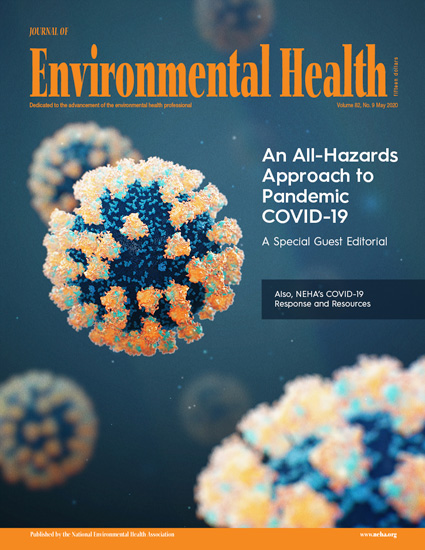Associations between transport modes and site-specific cancers: a systematic review and meta-analysis
IF 5.3
2区 环境科学与生态学
Q1 ENVIRONMENTAL SCIENCES
引用次数: 0
Abstract
Physical inactivity is a global public health problem. A practical solution would be to build physical activity into the daily routine by using active modes of transport. Choice of transport mode can influence cancer risk through their effects on levels of physical activity, sedentary time, and environmental pollution. This review synthesizes existing evidence on the associations of specific transport modes with risks of site-specific cancers. Relevant literature was searched in PubMed, Embase, and Scopus from 1914 to 17th February 2023. For cancer sites with effect measures available for a specific transport mode from two or more studies, random effects meta-analyses were performed to pool relative risks (RR) comparing the highest vs. lowest activity group as well as per 10 Metabolic Equivalent of Task (MET) hour increment in transport-related physical activity per week (∼150 min of walking or 90 min of cycling). 27 eligible studies (11 cohort, 15 case-control, and 1 case-cohort) were identified, which reported the associations of transport modes with 10 site-specific cancers. In the meta-analysis, 10 MET hour increment in transport-related physical activity per week was associated with a reduction in risk for endometrial cancer (RR: 0.91, 95% CI: 0.83–0.997), colorectal cancer (RR: 0.95, 95% CI: 0.91–0.99) and breast cancer (RR: 0.99, 95% CI: 0.89–0.996). The highest level of walking only or walking and cycling combined modes, compared to the lowest level, were significantly associated with a 12% and 30% reduced risk of breast and endometrial cancers respectively. Cycling, compared to motorized modes, was associated with a lower risk of overall cancer incidence and mortality. Active transport appears to reduce cancer risk, but evidence for cancer sites other than colorectum, breast, and endometrium is currently limited.交通模式与特定地点癌症之间的关系:系统回顾与荟萃分析
缺乏运动是一个全球性的公共健康问题。一个切实可行的解决方案是通过使用积极的交通方式,将体育锻炼纳入日常生活。交通方式的选择可通过对体力活动水平、久坐时间和环境污染的影响来影响癌症风险。本综述综合了特定交通方式与特定癌症风险之间关系的现有证据。在 PubMed、Embase 和 Scopus 中检索了 1914 年至 2023 年 2 月 17 日期间的相关文献。对于有两项或更多研究提供了特定交通方式效应测量值的癌症部位,我们进行了随机效应荟萃分析,以汇集最高活动量组与最低活动量组的相对风险系数(RR),以及每周与交通相关的体力活动(步行 150 分钟或骑自行车 90 分钟)每增加 10 个代谢当量任务(MET)小时的相对风险系数(RR)。共发现了 27 项符合条件的研究(11 项队列研究、15 项病例对照研究和 1 项病例队列研究),这些研究报告了交通方式与 10 种特定癌症的关系。在荟萃分析中,每周增加 10 个 MET 小时与交通相关的体力活动与子宫内膜癌(RR:0.91,95% CI:0.83-0.997)、结肠直肠癌(RR:0.95,95% CI:0.91-0.99)和乳腺癌(RR:0.99,95% CI:0.89-0.996)风险的降低有关。与最低水平相比,最高水平的仅步行或步行与骑自行车相结合的模式与乳腺癌和子宫内膜癌的风险分别降低 12% 和 30% 显著相关。与机动车模式相比,骑自行车与总体癌症发病和死亡风险降低有关。主动交通似乎可以降低癌症风险,但目前除结肠直肠癌、乳腺癌和子宫内膜癌外,其他癌症部位的证据还很有限。
本文章由计算机程序翻译,如有差异,请以英文原文为准。
求助全文
约1分钟内获得全文
求助全文
来源期刊

Environmental Health
环境科学-公共卫生、环境卫生与职业卫生
CiteScore
10.10
自引率
1.70%
发文量
115
审稿时长
3.0 months
期刊介绍:
Environmental Health publishes manuscripts on all aspects of environmental and occupational medicine and related studies in toxicology and epidemiology.
Environmental Health is aimed at scientists and practitioners in all areas of environmental science where human health and well-being are involved, either directly or indirectly. Environmental Health is a public health journal serving the public health community and scientists working on matters of public health interest and importance pertaining to the environment.
 求助内容:
求助内容: 应助结果提醒方式:
应助结果提醒方式:


